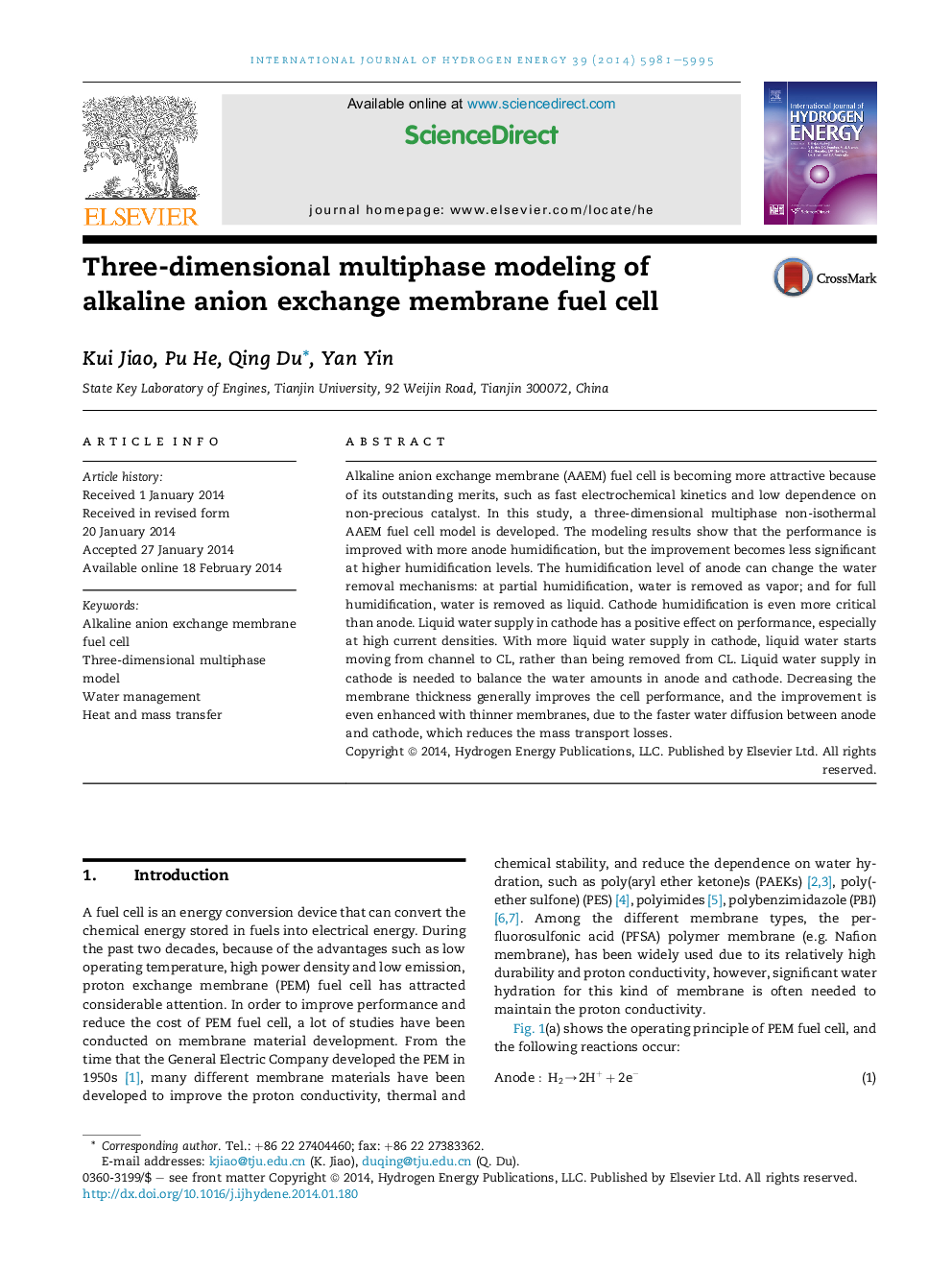| Article ID | Journal | Published Year | Pages | File Type |
|---|---|---|---|---|
| 7719924 | International Journal of Hydrogen Energy | 2014 | 15 Pages |
Abstract
Alkaline anion exchange membrane (AAEM) fuel cell is becoming more attractive because of its outstanding merits, such as fast electrochemical kinetics and low dependence on non-precious catalyst. In this study, a three-dimensional multiphase non-isothermal AAEM fuel cell model is developed. The modeling results show that the performance is improved with more anode humidification, but the improvement becomes less significant at higher humidification levels. The humidification level of anode can change the water removal mechanisms: at partial humidification, water is removed as vapor; and for full humidification, water is removed as liquid. Cathode humidification is even more critical than anode. Liquid water supply in cathode has a positive effect on performance, especially at high current densities. With more liquid water supply in cathode, liquid water starts moving from channel to CL, rather than being removed from CL. Liquid water supply in cathode is needed to balance the water amounts in anode and cathode. Decreasing the membrane thickness generally improves the cell performance, and the improvement is even enhanced with thinner membranes, due to the faster water diffusion between anode and cathode, which reduces the mass transport losses.
Related Topics
Physical Sciences and Engineering
Chemistry
Electrochemistry
Authors
Kui Jiao, Pu He, Qing Du, Yan Yin,
